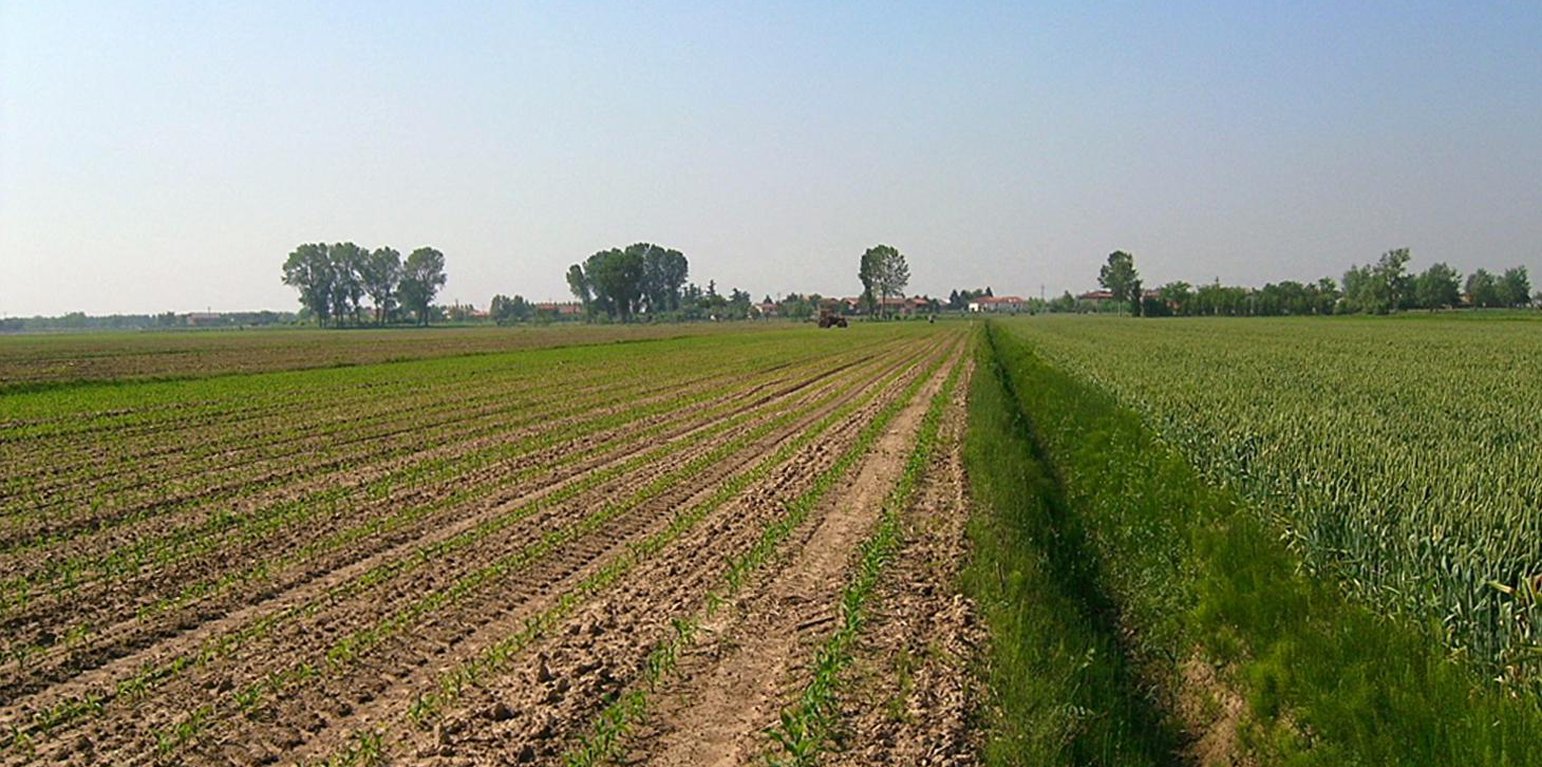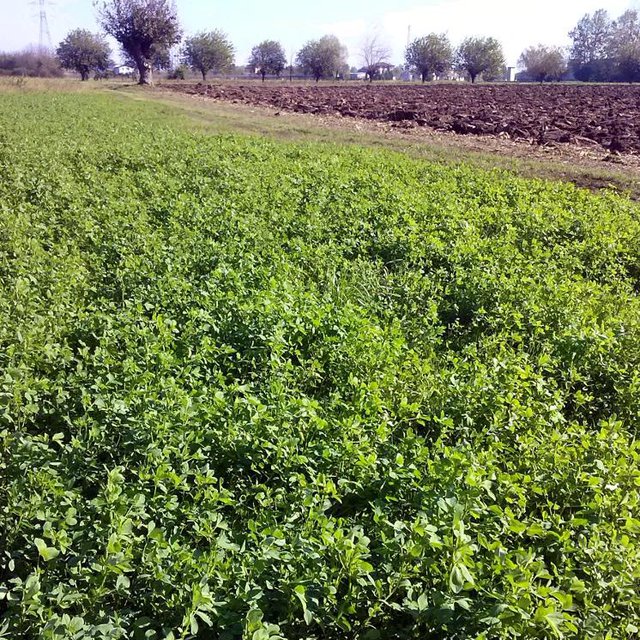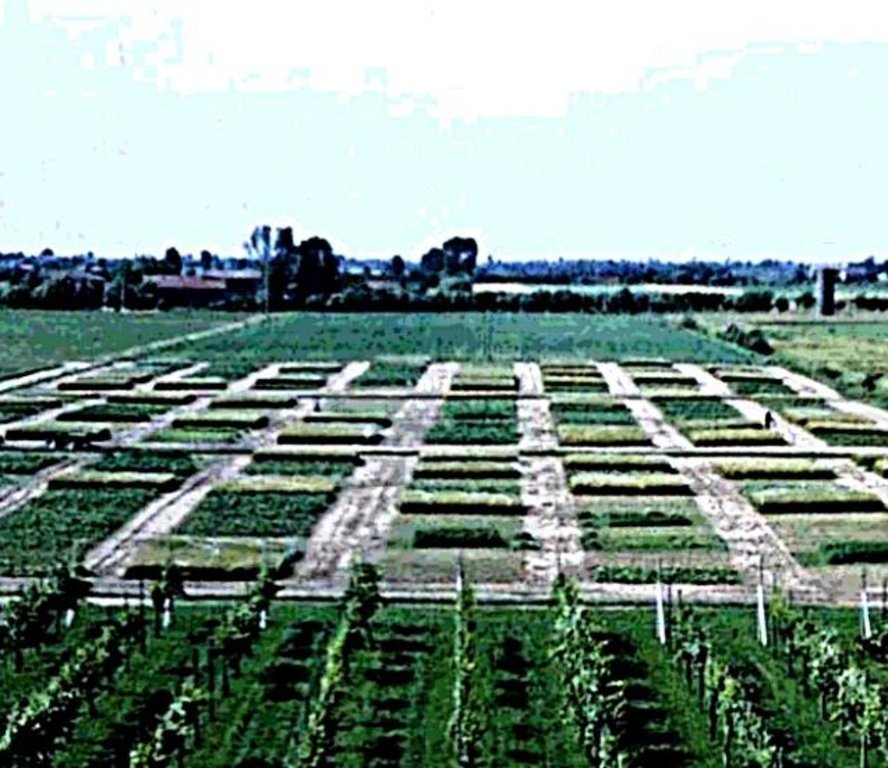



Crop rotations in Veneto region, particularly in the low Venetian plain where agriculture is mainly concentrated, is diversified and based on the needs of each farmer. However most rotation systems are confined to time limits of six years or less, providing a succession of spring (generally maize, soybean, sorghum) and winter crops (wheat, rapeseed, barley). Legumes play a pivotal role on crop rotation due to their richness in protein for both man and breeding. Using legumes in the crop rotation favour the fixation of atmospheric nitrogen and bind it into the soil with a significant increase of soil fertility.
Purpose of the Technology: Crop rotation has the ability to control weeds and break pest cycles reducing the use of pesticides. Diversification of crop production increases soil and ecosystem biodiversity promoting the stability of agricultural systems. The introduction of legumes in crop rotation enhances nutrient availability and generally soil quality.
Establishment / maintenance activities and inputs: Crop rotation can be adjusted to the needs of farmers and can be adopted without significant investments and further costs. A typical crop rotation provides for the succession of deep-rooting crops (e.g. maize), winter wheat and finally soybean, which contribute to the re-establishment of soil fertility. Moreover the system allows a better distribution of labour throughout the year.
Natural / human environment: Crop rotation has many agronomic and environmental benefits compared with monoculture cropping. The increase of soil and agro-ecosystems biodiversity has positive effect on its resilience, promoting its capacity to respond to natural and anthropogenic perturbation. From an environmental point of view, the introduction of legumes favours a reduction of chemical inputs, with significant benefits for surface and groundwater quality.
Lieu: Low venetian plain of veneto region, Italy, Italie
Nbr de sites de la Technologie analysés:
Diffusion de la Technologie: répartie uniformément sur une zone (approx. 1 000-10 000 km2)
Dans des zones protégées en permanence ?:
Date de mise en oeuvre: il y a plus de 50 ans (technologie traditionnelle)
Type d'introduction






| Spécifiez les intrants | Unité | Quantité | Coûts par unité (Euro €) | Coût total par intrant (Euro €) | % des coût supporté par les exploitants des terres |
| Equipements | |||||
| Tillage | ha | 1,0 | 190,5 | 190,5 | |
| Seedbed preparation and sowing | ha | 1,0 | 190,5 | 190,5 | |
| Weed control | ha | 1,0 | 89,0 | 89,0 | |
| Harvesting | ha | 1,0 | 153,0 | 153,0 | |
| Matériel végétal | |||||
| Seeds | ha | 1,0 | 190,5 | 190,5 | |
| Engrais et biocides | |||||
| Fertilizer | ha | 1,0 | 406,0 | 406,0 | |
| Biocides | ha | 1,0 | 125,0 | 125,0 | |
| Coût total d'entretien de la Technologie | 1'344.5 | ||||
| Coût total d'entretien de la Technologie en dollars américains (USD) | 1'680.63 | ||||
In the long-term the technology maintains soil fertility and reduces pest diseases. Moreover, it contriobutes to differentiate yields and markets.